Ansatte i SINTEF
| Navn | Tittel | Avdeling | Telefon | E-post | |
|---|---|---|---|---|---|

|
Abdalla, Elhadi Mohsen Hassan | Forsker | Infrastruktur | ||

|
Abdelmoteleb, Serag-Eldin | Forsker | Energi og transport | ||

|
Abrahamsen, Bjørn Christian | Seniorforsker | Energi og transport | ||

|
Abrahamsen-Prsic, Mia | Forsker | Skip og havkonstruksjoner | ||

|
Abrahamsson, Stefan Paul K | Seniorforsker | SINTEF Narvik | ||

|
Adam, Jan | Seniorrådgiver | SINTEF Community - Stab | ||

|
Adhau, Saket | Forsker | Bærekraftig energiteknologi | ||

|
Ahlquist, Ina Helene | Forsker | Fiskeri og ny biomarin industri | ||

|
Ahmed, Elyes | Forsker | Mathematics and Cybernetics | ||
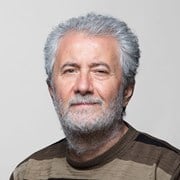
|
Ahmed, Niaz | Seniorrådgiver | Smarte sensorer og mikrosystemer | ||

|
Ahmed, Rakib | Master of science | Manufacturing | ||

|
Ahmed, Sajidah | Forsker | SINTEF Nord | ||

|
Ahmed, Tazrin | Forsker | SINTEF Helgeland | ||
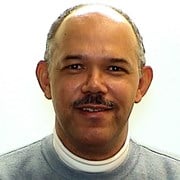
|
Akporiaye, Duncan | Forskningsdirektør | Industri - Instituttstab | ||

|
Akselsen, Andreas Holm | Forsker | Skip og havkonstruksjoner | ||

|
Aksetøy, Laila Økdal | Kunnskapsforvalter | SINTEF Energi - Stab | ||

|
Albert, Daniel | Senior kommunikasjonsrådgiver | SINTEF Energi - Stab | ||

|
Albrektsen, Thor | Master of science | Energi og transport | ||

|
Alcock, Ben | Forskningsleder | Materialer og nanoteknologi | ||

|
Aldridge, David | Forsker | Fiskeri og ny biomarin industri | ||

|
Ali, Ahmed | Forsker | Energisystemer - nett | ||

|
Almsbakken, Rune | Forskningsleder | Manufacturing | ||

|
Almåsbakk, Jan André | Senior controller | SINTEF Ocean - Administrasjon | ||

|
Alnæs, Lisbeth-Ingrid | Seniorforsker | Infrastruktur | ||

|
Alonso Pedrero, Raquel | Forsker | Bærekraftig energiteknologi | ||

|
Alquiza Madina, Maria | Forsker/dr.gradsstipendiat | Fiskeri og ny biomarin industri | ||

|
Alsén, Marlene | Sertifiseringskonsulent | Kunnskapsformidling og sertifisering | ||

|
Alsos, Hagbart Skage | Forskningsleder | Energi og transport | ||
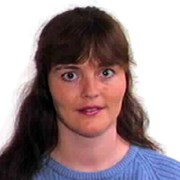
|
Alstad, Berit | Prosjektkonsulent | SINTEF Community - Stab | ||

|
Alterskjær, Anders | Forskningsleder | Skip og havkonstruksjoner | ||
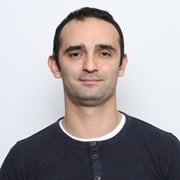
|
Alvaro, Antonio | Seniorforsker | Materialer og nanoteknologi | ||

|
Alvestad, Anja Helene | Forsker | Fiskeri og ny biomarin industri | ||

|
Amedi, Salah | Master of science | Prosessteknologi | ||

|
Amundsen, Herman Biørn | Forsker | Havbruk | ||

|
Anantharaman, Rahul | Seniorforsker | Gassteknologi | ||

|
Anaya-Lara, Olimpo | Forsker | Energisystemer - nett | ||

|
Andersen, Casper Welzel | Forsker | Klima og miljø | ||

|
Andersen, Jens Fredrik | Senior controller | SINTEF Digital - Management and Staff | ||

|
Andersen, Kamilla Heimar | Forsker | Bygninger og installasjoner | ||

|
Andersen, Lars Haugdal | Senior kommunikasjonsrådgiver / Web manager | Strategi og kommunikasjon | ||

|
Andersen, Marie Brøvig | Administrasjonskonsulent | SINTEF Community - Stab | ||

|
Andersen, Marius Endre Holtermann | Forsker | Havbruk | ||

|
Andersen, Nina Haugland | Forsker | Software Engineering, Safety and Security | ||

|
Andersen, Odd | Seniorforsker | Mathematics and Cybernetics | ||

|
Andersen, Rolf | Senior prosjektleder | SINTEF Ocean - Administrasjon | ||
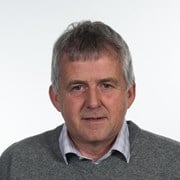
|
Andersen, Terje | Seniortekniker | Skip og havkonstruksjoner | ||

|
Andersen, Thale Kvernberg | Seniorforsker | Teknologiledelse | ||

|
Andersen, Tobias Meyer | Master of science | Mathematics and Cybernetics | ||

|
Anderson, Lasse Borg | Forsker | Termisk energi | ||

|
Andersson, Frank | Senioringeniør | Skip og havkonstruksjoner | ||

|
Andersson, Leif Erik | Forsker | Gassteknologi | ||

|
Andersson, Stefan | Forsker | Metallproduksjon og prosessering | ||

|
Andersson, Vegard | IT-utvikler | Organisasjon og fellestjenester | ||

|
Andreassen, Eline | HR-rådgiver | SINTEF Digital - Management and Staff | ||

|
Andreassen, Erik | Seniorforsker | Materialer og nanoteknologi | ||

|
Andreassen, Sverre Olav | Seniorrådgiver | Kunnskapsformidling og sertifisering | ||

|
Andreassen, Vilde | Master of science | Bærekraftig energiteknologi | ||

|
Andrenacci, Sara | Master of science | Bærekraftig energiteknologi | ||

|
Andresen, Christian Andre | Forsker | Energisystemer - produksjon | ||
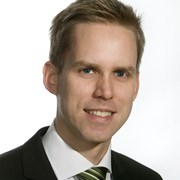
|
Andresen, Trond | Seniorforsker | Gassteknologi | ||

|
Andrewes, Laila Myren | Avdelingskoordinator | Bioteknologi og nanomedisin | ||

|
André-Zarna, Chiara | Forsker | Manufacturing | ||

|
Anglade, Inka | Forsker | Fiskeri og ny biomarin industri | ||

|
Angvik, John Trygve | Ingeniør | Bærekraftig energiteknologi | ||

|
Ansaloni, Luca | Seniorforsker | Bærekraftig energiteknologi | ||
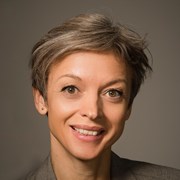
|
Anthun, Kirsti Sarheim | Seniorforsker | Helse | ||

|
Anthun, Kjartan Sarheim | Seniorforsker | Helse | ||

|
Anton, Yannick Martin | Rådgiver | Arkitektur, byggematerialer og konstruksjoner | ||

|
Antonsen, Bjørn Ivar | IT-koordinator | SINTEF Narvik | ||

|
Antonsen, Roy Eivind | Forskningssjef | SINTEF Narvik | ||

|
Antypas, Konstantinos | Seniorforsker | Helse | ||

|
Apneseth, Hilde | HMS- og sikringssjef | SINTEF Digital - Management and Staff | ||

|
Arbo, Siri Marthe | Forskningsleder | Manufacturing | ||

|
Arega, Meron Assefa | Forsker | Bærekraftig energiteknologi | ||

|
Arellano Prieto, Yessica Alexandra | Seniorforsker | Gassteknologi | ||

|
Arica, Emrah | Seniorforsker | Manufacturing | ||

|
Arlov, Øystein | Forskningsleder | Bioteknologi og nanomedisin | ||

|
Arnesen, Petter | Seniorforsker | Mobilitet | ||

|
Arntsen, Bård | Seniorforsker | SINTEF Narvik | ||

|
Arntsen, Christopher | Forsker | Bærekraftig energiteknologi | ||

|
Arstad, Bjørnar | Seniorforsker | Prosessteknologi | ||

|
Arvesen, Anders | Forsker | Energisystemer - produksjon | ||

|
Asbøll, Karen | HR-sjef | Industri - Instituttstab | ||

|
Aschehoug, Silje Helene | Forskningssjef | Manufacturing | ||

|
Askeland, Magnus | Forsker | Energisystemer - produksjon | ||

|
Askheim, Trine Solveig Iversen | Senior administrasjonskonsulent | SINTEF Narvik | ||

|
Asphaug, Erlend Storrøsæter | Seniortekniker | Metallproduksjon og prosessering | ||

|
Asphaug, Ola | Godkjenningsleder | Kunnskapsformidling og sertifisering | ||

|
Asphaug, Silje Kathrin | Forsker | Arkitektur, byggematerialer og konstruksjoner | ||

|
Aspragkathos, Apostolos | Forsker | Software Engineering, Safety and Security | ||

|
Astekin, Merve | Forsker | Sustainable Communication Technologies | ||

|
Auflem, Helene Berntsen | Prosjektleder | Gassteknologi | ||

|
Aukan, Randi | Senior prosjektkoordinator | Energisystemer - nett | ||

|
Aukrust, Trond | Seniorforsker | Metallproduksjon og prosessering | ||

|
Aune, Ragnhild | Seniorrådgiver | Materialer og nanoteknologi | ||

|
Aune, Randi | Senioringeniør | Bioteknologi og nanomedisin | ||

|
Aunsmo, Sigrid | Master of science | Gassteknologi | ||

|
Aunaas, Anne Lise | Økonomisjef | SINTEF Eiendom | ||

|
Auran, Per Gunnar | Seniorforsker | Software Engineering, Safety and Security | ||

|
Aursand, Eli Grong | Investeringssjef | SINTEF TTO | ||

|
Aursand, Marit | Seniorforsker | Fiskeri og ny biomarin industri | ||

|
Aursland, Ingvild Benedicte Småge | Kommunikasjonsrådgiver | SINTEF Energi - Stab | ||

|
Austad, Henrik | Forsker | Mathematics and Cybernetics | ||
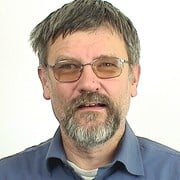
|
Austegard, Anders | Forsker | Gassteknologi | ||

|
Austnes, Hege | Senior HR-rådgiver | SINTEF Digital - Management and Staff | ||

|
Auth, Jorunn | Administrasjonskonsulent | SINTEF Community - Stab | ||

|
Avdal, Jørgen | Forsker | Helse | ||

|
Avogadro, Roberto | Forsker | Sustainable Communication Technologies | ||

|
Azalde, Gloria | Master of science | Helse | ||
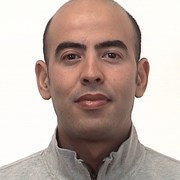
|
Azrague, Kamal | Seniorforsker | Infrastruktur | ||

|
Aakervik, Jørund | Forskningsleder | Elkraftteknologi | ||

|
Aakre, Torstein Grav | Forsker | Elkraftteknologi | ||

|
Aakvik, Frode | Eiendomsforvalter og prosjektansvarlig | SINTEF Eiendom | ||

|
Aakvaag, Niels | Seniorforsker | Smarte sensorer og mikrosystemer | ||

|
Aalberg, Ann Karin Jullumstrø | Prosjektkoordinator | Gassteknologi | ||

|
Aalberg, Asbjørn Lein | Forsker/dr.gradsstipendiat | Teknologiledelse | ||

|
Aam, Sverre | Seniorrådgiver | SINTEF Energi - Stab | ||

|
Aamodt, Andreas | Forsker | Bygninger og installasjoner | ||

|
Aamot, Eli | Konserndirektør | Industri - Instituttstab | ||

|
Aamot, Kristian | Forskningsingeniør | Energi og transport | ||

|
Aandahl, Marta | HR-rådgiver | SINTEF Ocean - Administrasjon | ||

|
Aarhaug, Thor Anders | Seniorforsker | Bærekraftig energiteknologi | ||

|
Aarlien, Rune | Senior prosjektleder | Gassteknologi | ||

|
Aarnæs, Trygve | Forsker | Metallproduksjon og prosessering | ||

|
Aas, Britt | Administrasjonskoordinator | SINTEF Nordvest | ||

|
Aas, Camilla Bakken | Seniorrådgiver | Bygninger og installasjoner | ||
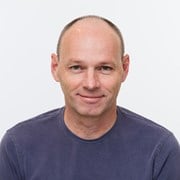
|
Aas, Kristian Leonard | Seniorforsker | Prosessteknologi | ||

|
Aas, Lotte Forså | Økonomisjef konsern | Økonomi og styring | ||

|
Aas, Marianne | Forskningsingeniør | Klima og miljø | ||

|
Aasbø, Sondre | Rådgiver | Kunnskapsformidling og sertifisering | ||

|
Aase, Niels Henrik | Forsker | Gassteknologi | ||
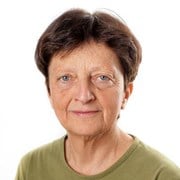
|
Aasen, Inga Marie | Seniorforsker | Bioteknologi og nanomedisin | ||

|
Aasgård, Ellen Krohn | Forskningssjef | Energisystemer - produksjon | ||

|
Aasheim, Jan-Fredrik | Seniorrådgiver | Bygninger og installasjoner | ||

|
Aastorp, Grete | HMS- og sikringssjef | SINTEF Energi - Stab | ||